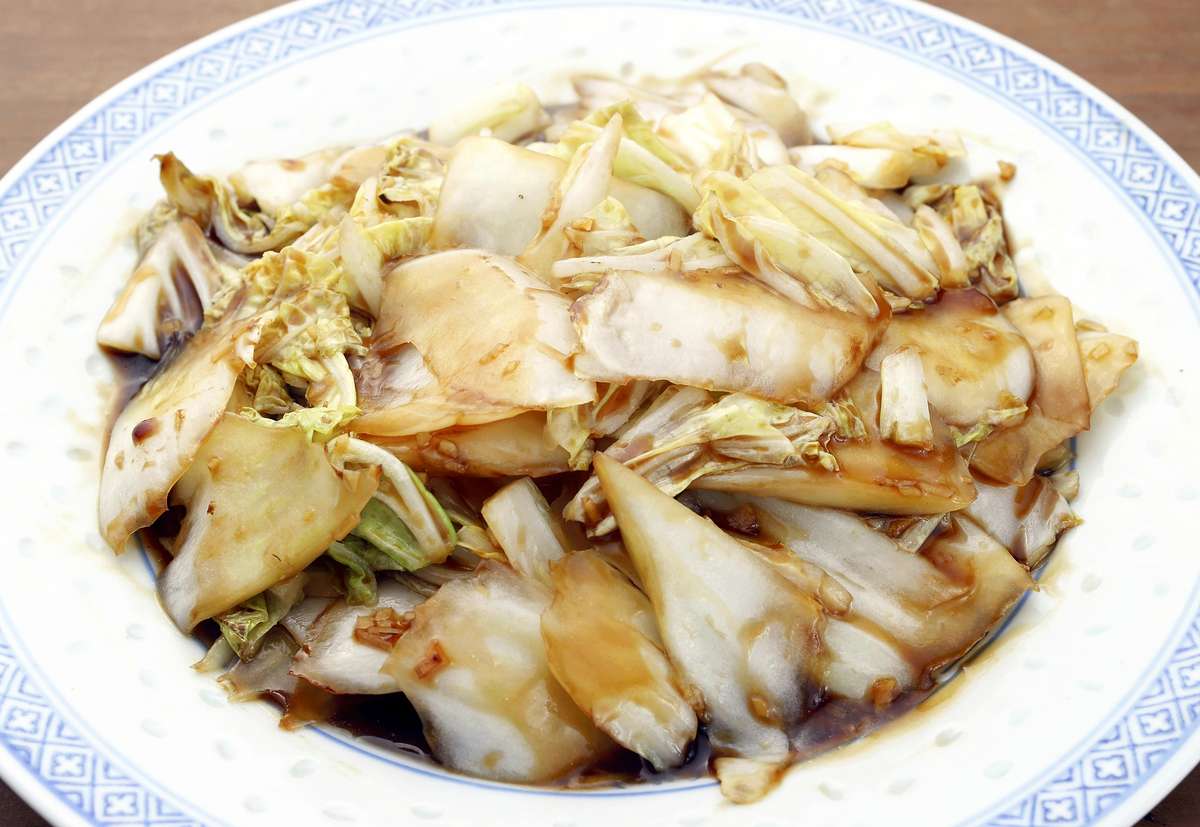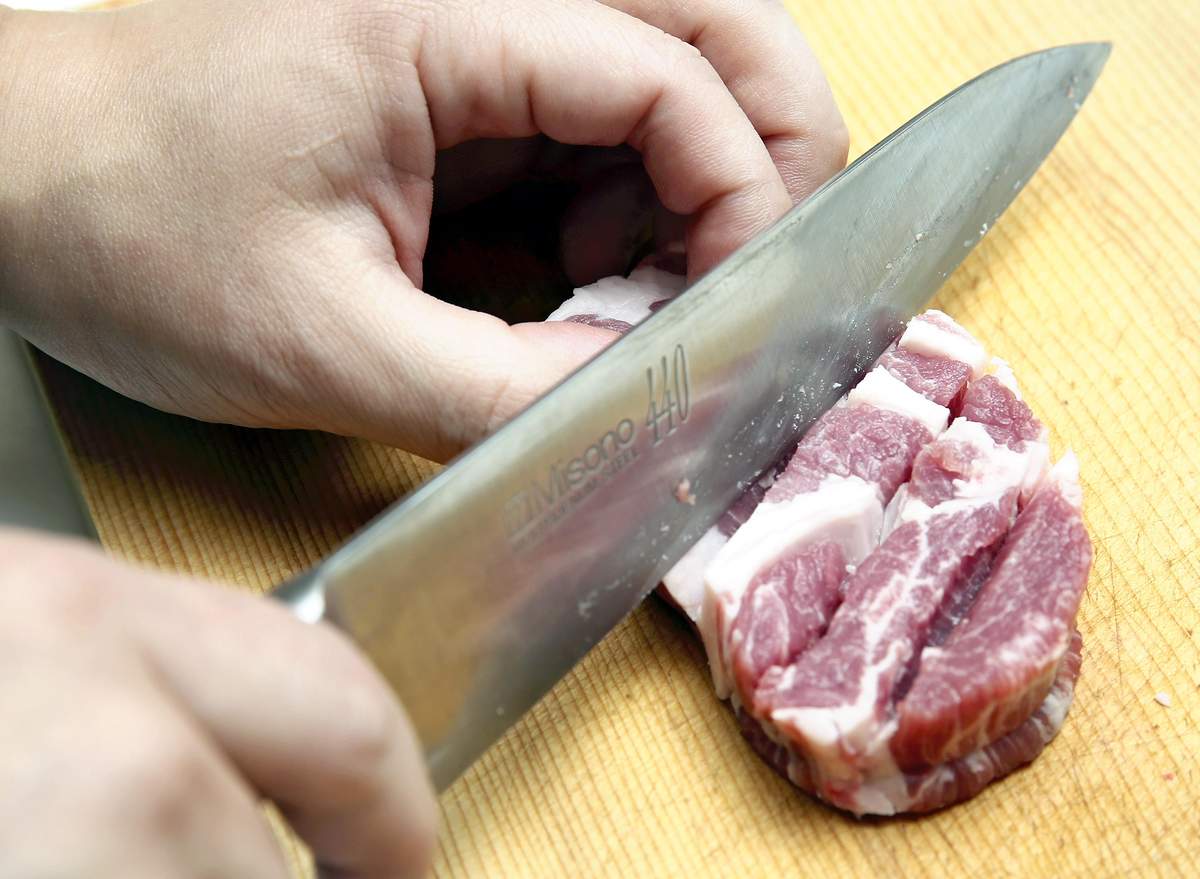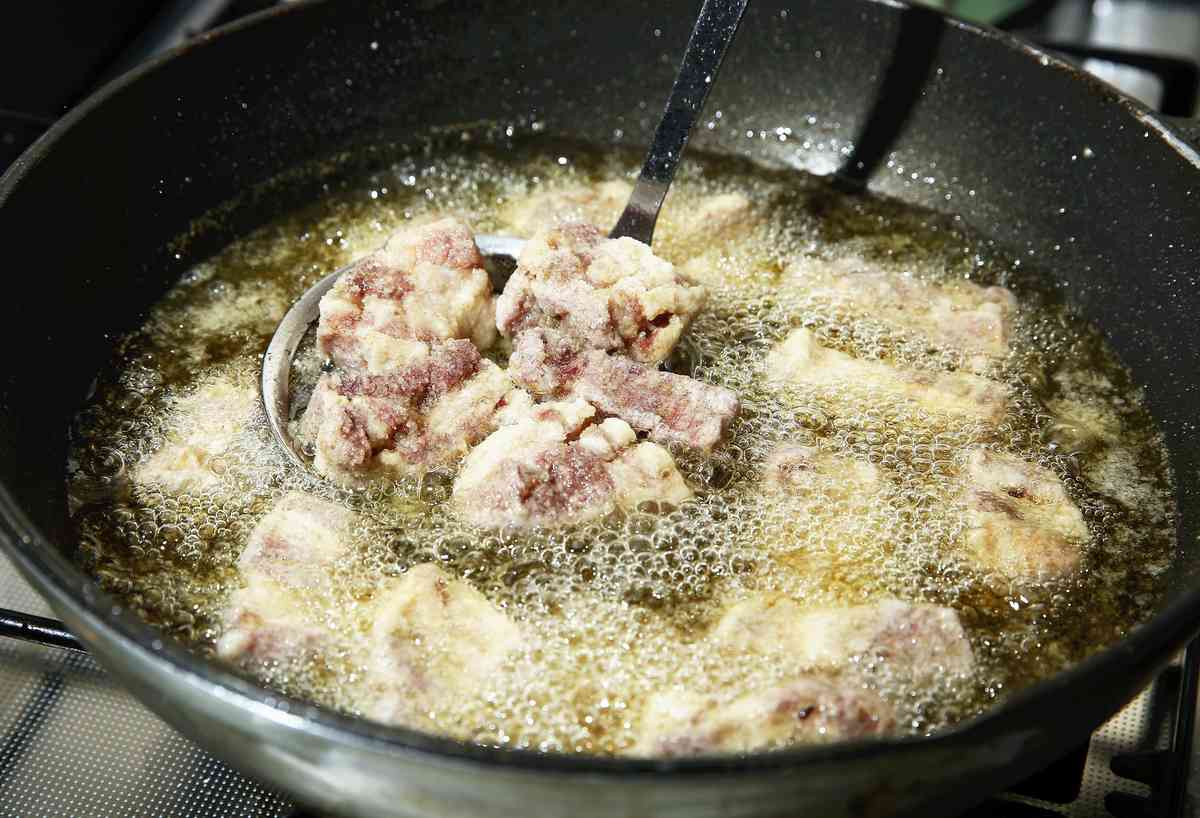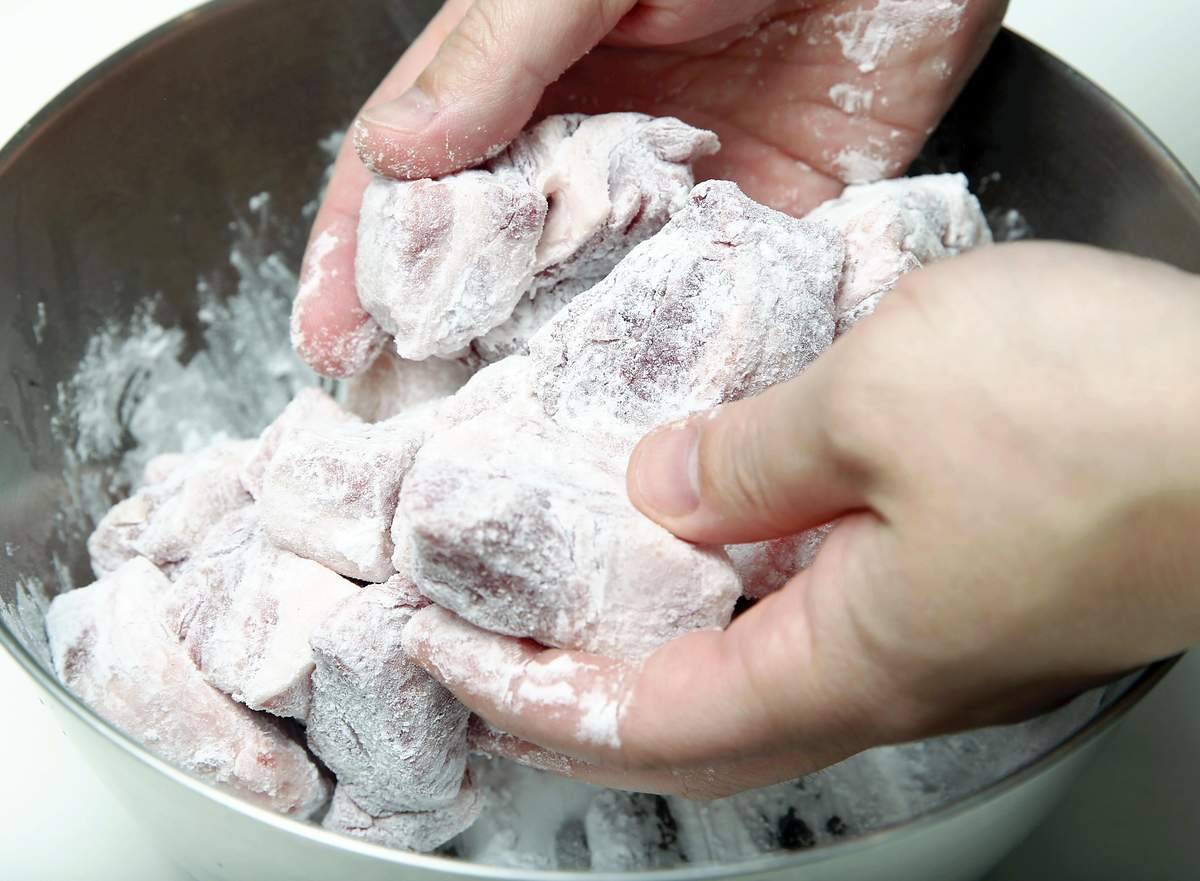
Black vinegar sweet and sour pork
12:00 JST, April 6, 2025
Sweet and sour pork is a typical Chinese dish. Cookery specialist Ryo Imai shares a recipe for black vinegar sweet and sour pork, a dish with an irresistibly rich black vinegar flavor.
While ordinary sweet and sour pork, made with ketchup, is rich in vegetables, such as onions and bell peppers, pork is the only foodstuff in this black vinegar sweet and sour pork, seasoned with black vinegar, as the name suggests.
“Since the dish doesn’t include vegetables, the deliciousness of pork and black vinegar can be felt directly, making the dish very satisfying to eat,” Imai said.
Since boneless pork ribs have too much fat and pork loin has too little, Imai chose pork shoulder, which is more well balanced. After cutting the pork into two-centimeter-thick slices, he makes shallow scoring on both sides, which not only helps soften the meat but also allows it to be cooked through and flavors to spread throughout.
The black vinegar used is the kind produced in China. Japanese black vinegar is made from brown rice, while Chinese black vinegar is made from glutinous rice and has a strong umami taste and mild acidity. Chinese tamari soy sauce is also used to bring out the richness and blackness of the dish. Both can be purchased online or at stores that sell Chinese ingredients. “The key is to add not only black vinegar but also rice vinegar to add freshness,” Imai said.
After seasoning the pork, sprinkle katakuriko starch all over the meat. This not only makes the pork savory but also prevents the juices from running out of the meat and makes it easier to mix with a starchy sauce. Because the pork is seasoned only with salt and pepper at this point and contains little moisture, its coating can easily come off. So, once the pork is placed in the oil, do not touch it with chopsticks or anything else until the entire coating becomes firm. Fry the pork until it is crispy.
Put the ingredients of the starchy sauce in the frying pan, then mix and heat. Bring the mixture to a full boil to keep it from becoming watery. This will help the starchy sauce mix well with the pork when it is added later.
The large, crispy pieces of pork are generously covered with strong-flavored black vinegar, filling one’s mouth with aroma and flavor. This is a great dish that provides a sense of luxury by using only meat, especially now that vegetables are so expensive.
Stir-fried Chinese cabbage

Stir-fried Chinese cabbage using leftover black vinegar
Why not make stir-fried Chinese cabbage using leftover black vinegar? Chop 400 grams Chinese cabbage leaves into chunks and cut the core into thin slices. Heat 1 tablespoon sesame oil in a frying pan over medium-high heat, fry 1 clove of garlic and 1 knob of ginger (both minced), add Chinese cabbage core and fry for two minutes. Add the leaves and stir-fry for one minute. Move the ingredients to the edge of the frying pan. Mix 3 tablespoons black vinegar, 1½ tablespoons soy sauce, 1 tablespoon Shaoxing rice wine, 1 tablespoon sugar and 1 teaspoon katakuriko starch, then pour the mixture into the empty part of the pan. Stir-fry everything together.
Black vinegar sweet and sour pork
Ingredients (serves 2):
- 400 grams pork shoulder
- 2 tbsp black vinegar
- 1 tbsp Shaoxing rice wine
- 1 tsp Chinese soy sauce (tamari soy sauce)
- Cooking oil as needed
-

The Yomiuri Shimbun
Make shallow cuts on each side of each slice of pork. -

The Yomiuri Shimbun
Rub the pork with katakuriko starch to taste. -

The Yomiuri Shimbun
Fry the pork in the oil. 


Directions:
1. Cut pork into 2-centimeter-thick slices. Make several cuts about 2-3 millimeters deep on both sides and cut the meat into large bite-sized pieces.
2. Place the pork in a bowl and rub with salt and pepper, then also rub with katakuriko starch to taste.
3. Mix black vinegar, Shaoxing rice wine, Chinese soy sauce with 2 tablespoons each of rice vinegar, sugar and water, 1 tablespoon soy sauce and 2 teaspoons katakuriko starch.
4. Heat oil to 170 C, add pork and fry for 4 to 5 minutes until crispy, then remove.
5. Put the ingredients from step 3 into the frying pan, heat and mix. When the sauce thickens and comes to a boil, add the pork and stir briefly. Plate and serve.
"Features" POPULAR ARTICLE
-

Sanrio to Open Museum in Yamanashi Pref. Dedicated to Founder, Exhibits Include Hello Kitty, Other Characters
-

Autumn Foliage Surrounds Visitors to Tokyo’s Showa Kinen Park
-

My Daughter No Longer Speaks to Me, But I Want to See Her and My Grandchild
-

Kumamoto: Public Bath Refurbished as Library Where You Can Chat, Take Photos
-

Frozen Vegetables: Demand Rises for Convenient, Tasty Domestic Produce
JN ACCESS RANKING
-

Tokyo Economic Security Forum to Hold Inaugural Meeting Amid Tense Global Environment
-

Keidanren Chairman Yoshinobu Tsutsui Visits Kashiwazaki-Kariwa Nuclear Power Plant; Inspects New Emergency Safety System
-

Imports of Rare Earths from China Facing Delays, May Be Caused by Deterioration of Japan-China Relations
-

University of Tokyo Professor Discusses Japanese Economic Security in Interview Ahead of Forum
-

Japan Pulls out of Vietnam Nuclear Project, Complicating Hanoi’s Power Plans



























